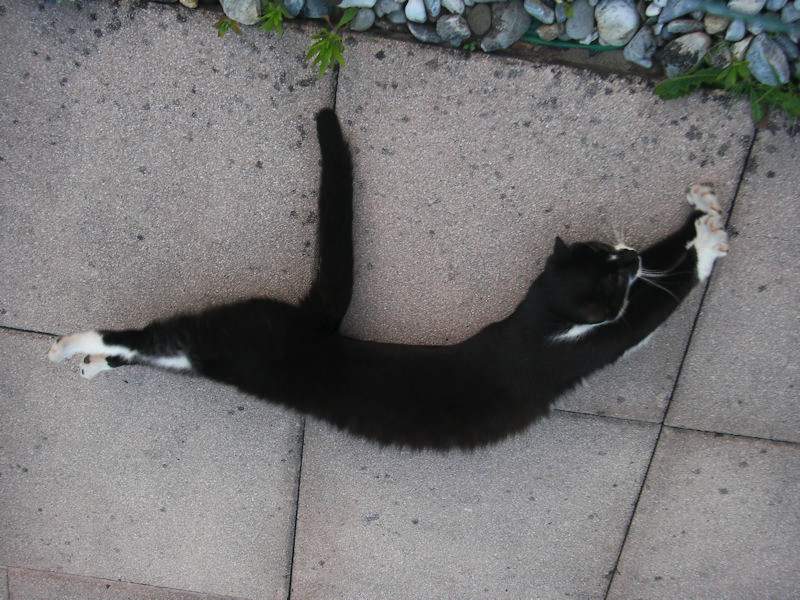Summer is coming, you want to lose weight and get ripped. It’s something we can work on for sure…
Fat Loss
Losing fat is relatively easy: you only need to burn more calories than you consume…and the more calories you burn, the higher your potential to burn fat (through an increase of thermogenesis). This is why a smart move would be considering keeping this potential high. In other words, set up a training and a diet plan both aimed to either increase it or maintain it high.
Resistance Training
Resistance Training is the winner here; because not only resistance training strengthen fibers, it also lead to the development of new ones; which both in return, speed up your metabolic rate. In then you simply burn fat faster. You can either lift weights, use your own body weight to perform exercice (a method I’m fond of for 3 years now) that will both increase your lean body bass (assuming a proper diet). Not only you keep recruiting and developing new fibers, you only burn more calories during and after your sessions; because these very same calories will be used to heal the damaged tissues. This is a win win situation, because maintaining and healing the lean tissues, damaged during a session are both process that are more likely to increase your Basal Metabolic Rate.
Cardio
There are roughly two kinds of cardio exercises: HIIT for High Intensity Interval Training and LISS for Low Intensity Steady State cardio. LISS is the kind of exercise you perform on a treadmill, of when you are jogging for more than a couple of minutes and your heart rate beats up to 60% of its capacity. This is a “zone” you probably heard of, considered as the “fat burning zone”.
It seems that no matter HIIT session or a LISS session, you might end up just burning the same amount of calories. While with HIIT, you burn more calories per minute (assuming the intensity is there), and keep burning calories once the sessions is over, with LISS, sessions are usually much longer; so you are more likely to end up burning the same amount of calories. (More information here).
One thing to notice though, HIIT spares protein degradation, while LISS doesn’t, since in this context we are talking about losing fat; retaining the lean body mass is you concern.
Many studies showed that high-intensity efforts are more beneficial that low-intensity efforts when it comes to your body composition (we refer to body composition when we talk not only about the fat mass but also the amount of lean body mass).
High-Intensity Interval Training
Here is a routine you can follow yo boost your weight loss while preserving your lean body mass:
- 5 to 10 warm-up (jogging, jumping ropes, push-ups)
- 10 to 30 seconds sprint
- 2 to 4 minutes resting.
Repeat both last steps from 3 to 6 times (from 3.5 minutes to 30 minutes)
Rest and stretch like this cute kitty
If you properly followed the protocol, you should find it quite difficult, and your heart rate should range from 80 to 90% of its max. capacity. You’d end up sweating and not really able to keep going after 15 to 20 minutes!
Your Diet
But more importantly…this is solely your diet that will be the determining factor for your weight loss: simply reduce your caloric intakes to kickstart your weight loss. In a situation of a caloric deficit, it’s really important to consider micronutrient-rich foods, such as: vegetables, wheat, brown rice; avocados, or beans.
As for your protein intakes, don’t hesitate to increase the amount you’d normally consume. You can find proteins in Tofu, lean meat, red meat, fatty fishes, etc…
Not only these micronutrient-rich foods would prevent a too important deficiency in vitamins and minerals, they’ll also ensure you health and motivation don’t suffer too much from the deficit. Not only proteins will keep you full for a longer time, they are also paramount for muscle recovery (More details in the topic about proteins).
Usually, I recommend from 30 to 35% coming from lipids. Not only it has been proven that fatty acids increase weight loss, they also maintain hormonal heath. (More details in the topic about lipids). This is why removing them or strongly limiting them is not a smart move; you should rather decrease your carbohydrates consumption.
Do not forget to plan some refeed days, aimed not only to keep you sane, but also reminding you that you too can have a social life while cutting.
If you are more interested in cutting, do not miss our three part series that thoroughly dives into cutting.


